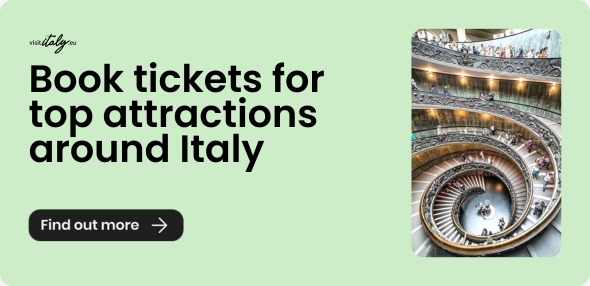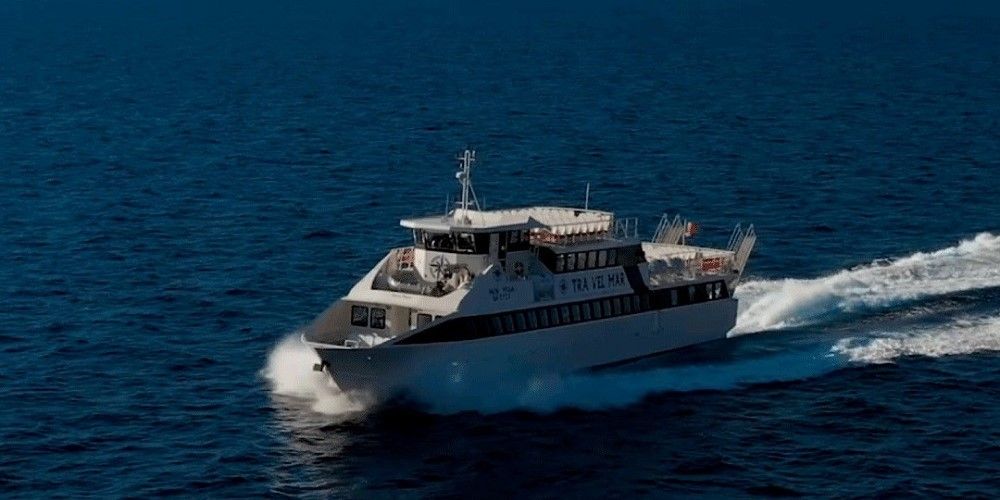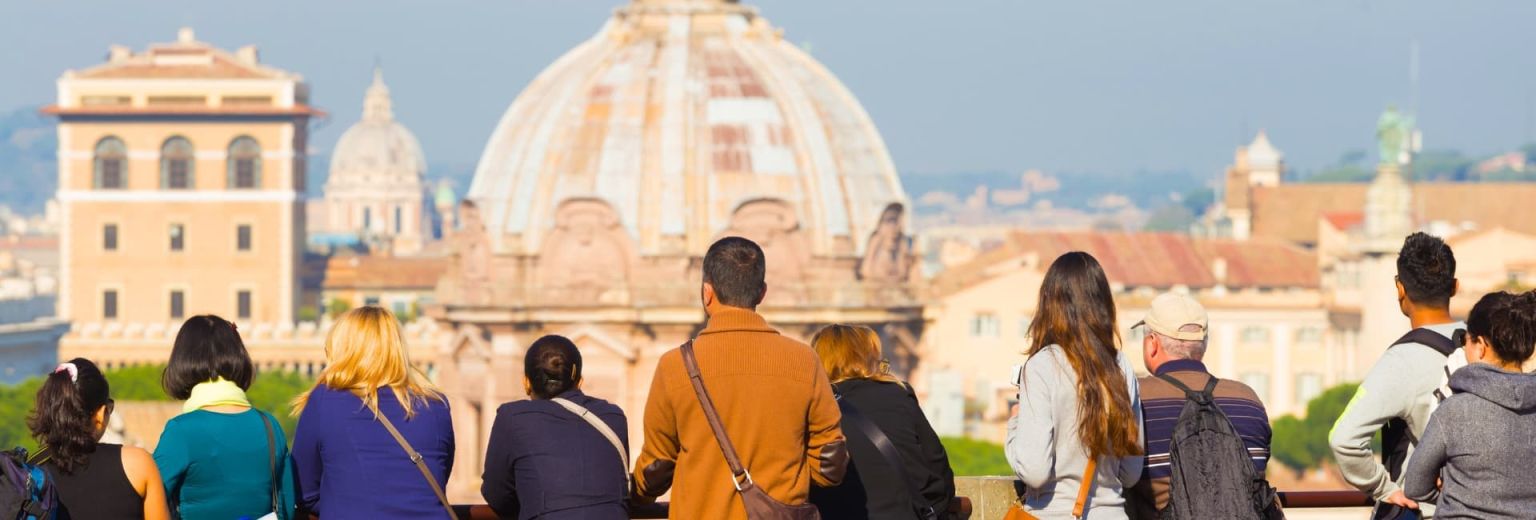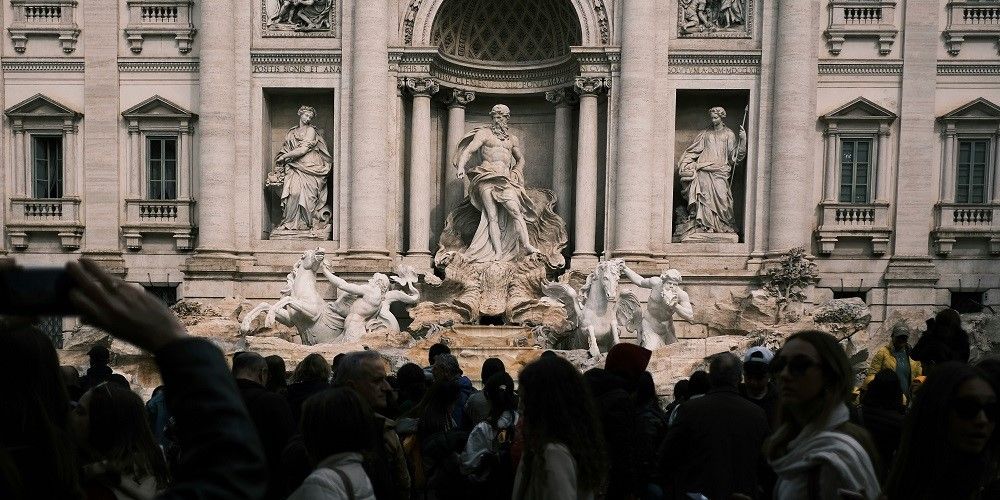The difference between what appears on Instagram and reality “explodes” when you actually travel to Italy's main tourist spots. Social media applied to tourism has many positive aspects, above all the promotion of destinations and accommodation facilities and the loyalty of people thanks to interaction and sharing, but the comparison between what appears in posts and reels and the physical world often leaves people disappointed.
The use of platforms has transformed tourism: content creators and influencers have a huge impact, and now, before travelling, people look to social media for inspiration and advice on exclusive locations and events. The most Instagrammable and Instagrammed places become attractive and trendy destinations. The downside is overtourism: places of art, history and culture, seaside and mountain resorts, victims of overcrowding and reduced to fast food outlets for hit-and-run selfies. That is why Visit Italy launched the 99% of Italy campaign with the aim of exploring that hidden 99% of Italy, made up of authentic places that have not yet gone viral.

Instagram vs reality: the true face of Italy's tourist spots
Italy looks perfect on Instagram: no traffic, no chaos or urban decay, forward-thinking local governments, beauty and charm everywhere. But what is it really like to visit places such as Venice, Florence or the Amalfi Coast in high season? Overcrowding is common in most holiday and resort destinations, with institutions considering the introduction of access tickets and limited entry to restrict visitor numbers.
The most photographed and admired Italian locations on Instagram are Venice, Florence, Rome and Positano, all of which are highly popular tourist destinations. These places are rich in charm and history, but are now grappling with the search for solutions to improve quality of life and reduce environmental and social impacts. Venice welcomes 25 million tourists a year, putting a strain on the daily lives of its residents, who now number just under 250,000: a decline of almost 48% compared to 1977. Not only that, but 100,000 motorboats travel through its canals, eroding the foundations and contributing to water pollution.
Florence is no exception, where the boom in tourism (an average of 29,000 visitors per day and 10.5 million per year) has triggered an exodus from the historic centre (in 15 years, B&Bs have increased from 150 to 12,000 and 1,200 new restaurants have opened) and a loss of local identity. In Rome, the invasion of tourists attracted by the capital's beauty and events such as the Jubilee (an average of 35 million visitors per year) is changing the face of the city, with crowded streets, impossible-to-use public transport and sky-high rents.
The paradox of Positano, one of Italy's most enchanting places with 160,000 visitors in the summer alone, is that it empties out in the off-season and when the sun goes down. Tourism is the fortune of the “vertical city,” which is particularly popular on TikTok, but the municipal administration needs to save the economy by protecting the few residents, now reduced to less than 4,000. In addition to the Amalfi Coast, Naples is also at risk in the name of tourism: the frenetic crowds of foreigners flocking to the Campania capital have reached such a point that the city centre has been emptied of its bars and restaurants.
The places most at risk from influencers in Italy
The list is long and does not only include the most famous locations. The case of the (former) golden couple on social media, Chiara Ferragni and Fedez, caused a surge in tourism in the Lake Como area when they decided to buy Villa Matilda, a dream residence in the luxury resort of Pognana Lario. Following the Ferragnez's separation, the property was sold, but places such as Bellagio, Faggeto Lario, Tremezzo, and Varenna continue to be inundated with visitors, thanks to the presence of Hollywood celebrities. Many international actors and actresses have been spotted, from George Clooney and his wife Amal to Keira Knightley, Michael Fassbender, Adrien Brody, Hugh Grant, and Andrew Garfield, often at the Sinigaglia stadium to watch the local team play their football games.
Every year, the Demoskopika research institute compiles the ICTS (Overall Index of Tourist Overcrowding), which identifies the destinations under the most pressure based on five key indicators: tourist density, accommodation density, tourist intensity, bed occupancy, and the amount of urban waste produced by tourists. “Overtourism is no longer just a challenge, but a priority that affects the sustainability of Italian destinations,” explain the researchers. “It not only affects the tourist experience, but also impacts the quality of life of local communities. The increase in overcrowding is a wake-up call that requires urgent and strategic action: from regulating flows during peak periods to promoting alternative destinations, to more effectively encouraging travel throughout the year, also promoting the months that are traditionally less popular with tourists.” Here are the most Instagrammed Italian locations at greatest risk of overtourism:
– Lake Braies
– Lake Tovel
– Bolzano
– Trento
– Trieste
– Venice
– Verona
– Milan
– Lake Como
– Cinque Terre
– Rimini
– Florence
– Livorno
– Roccaraso
– Rome
– Civita (Bagnoregio)
– Naples
– Positano and the Amalfi Coast
– Arcomagno beach in San Nicola Arcella
– Sardinia (La Pelosa, Stintino, Oasi Biderosa in Orosei, Cala Coticcio, Li Piscini in Cannigione, Punta Molentis in Villasimius)
What appears on social media and what you really find
The glossy images that come from Instagram create the illusion of beautiful and relaxing places, but once you arrive, if you don't take the right precautions, you run the risk of encountering experiences that are chaotic to say the least. When not managed properly, hit-and-run tourism in search of selfies in Instagrammable locations, with just a few hours to stop, snap and leave, becomes a devastating model. This is especially true for prestigious and delicate places such as Venice and the Amalfi Coast.
In the absence of a structured management, hospitality and cultural project that enhances the beauty and value of places in their distinctive features, what does not appear on social media are the stampede and traffic congestion, the queues to enter museums, the overcrowded beaches, the scorching heat and limited access to certain destinations. In Italy, tourism is already limited in several locations. Venice, the bay of Portonovo in Conero, the Sardinian beaches from Cala Coticcio to Stintino, Portofino and Procida all have red zones, restrictions on vehicle traffic, controlled access zones (ZAC) and entrance tickets for day visitors.
Responsible tourism: how to enhance the quality of the travel experience
There are many ways to enjoy the beauty of Italy's main tourist spots, avoiding the deception of photos and videos posted on social media and sidestepping the inconveniences caused by mass tourism. First of all, you need to focus on the time of year you choose to travel – the best seasons to visit Venice, Florence, Rome and Positano are spring (April-May) and autumn (September-October), when the weather is mild, there are fewer crowds, prices are lower and it is easier to get around on foot – and on booking in advance. Early booking ensures savings, a wide choice of accommodation, flexibility in booking conditions and more detailed planning.
The best way to avoid the crowds and enjoy an authentic, relaxed experience that makes you aware of where you are and what is around you, is to rely on local guides and choose lesser-known routes. There are some places that, when visited outside peak hours, allow you to discover the authentic city: the Museum of San Marco, the Scala Contarini del Bovolo, the Parco delle Rimembranze, the Ghetto, Dorsoduro, Murano, Burano and Torcello in Venice; San Miniato al Monte, the Boboli Gardens in the late afternoon, the Oltrarno, the Orti del Parnaso, the Museum of San Marco and the Bargello Museum in Florence; Ostia Antica, the Aventine Hill and Trevi Fountain in the early morning, the Colosseum in the late afternoon, the Roman Forum at sunset and the Trevi Fountain at night in Rome; the Roman Villa, the Saracen towers, the Fornillo Tower, the beaches of Laurito, Arienzo and Tordigliano in Positano.
Book your visit to Florence with Florence PassWhy accessibility is important

Travelmar
The main Italian cities can be reached by high-speed trains: Trenitalia's Frecciarossa and Frecciargento and Italo's fast connections. These trains allow you to travel quickly and comfortably on a dedicated network connecting Turin, Milan, Bologna, Florence, Rome and Naples. If you book in advance, tickets are affordable: arriving by plane in Milan, a Frecciarossa from the central station to Venice Santa Lucia costs between €20 and €70, depending on the class and when you book. Italo works in a similar way: a ticket from Florence Santa Maria Novella to Rome Termini at a convenient time costs between €17 and €38.
The situation is different for coastal towns, which require ferry or bus connections. In the case of Positano, you can get there with Travelmar and Grassi ferries from Salerno with a €15 ticket (departing from Piazza della Concordia or Porto Masuccio) or with the NLG ferry from Naples with a €26.50 ticket. Alternatively, there are local buses: from Naples with BusItalia Campania, the journey takes just over two hours (depending on traffic) with a single ticket costing €5.50; from Salerno, the journey is even shorter (just over an hour) and with Sita Sud, the single ticket costs €3.40.
Enjoy the journey from Naples to Positano round trip without interruptionFew tips for the first-time travellers to Italy
If you're active on social media and planning your first trip to Italy inspired by what you see on Instagram, perhaps for a dream honeymoon on the Amalfi Coast, in Tuscany, Puglia, Venice or Lake Como, there are many things you should know (and avoid) before you get started. In addition to valid documents, your budget and the right time of year to avoid overcrowding and problematic weather, it is important to take into account the digitalisation of accommodation facilities (Italy still lags behind the European average) and the boom in emerging destinations such as Naples (which has recently become the Italian wedding capital) and Umbria.
A Federturismo survey on wedding tourism, a strategic sector for Italian tourism and now concentrated mainly in the autumn months, reveals that 8% of the 44 million tourists who visit Italy every year, equal to 352,000 people, choose Italy to get married, go on honeymoon, celebrate anniversaries, or organise stag or hen parties. Italy is the world's leading destination for foreign couples' weddings: in 2024, over 15,100 weddings were celebrated, an increase of +11.4% compared to the previous year. Those who choose Italy for their wedding must pay close attention to the budget: the average cost per event has increased to €61,500, a rise of +4.2% compared to 2023. These figures show how important it is to plan ahead.
Why it is still worth visiting Italy
Despite overcrowding, long queues to visit museums and monuments, price increases, public transport issues, threats to the natural environment and the loss of local traditions, Italy's top tourist spots remain unmissable for foreign visitors. The reasons? History and culture, art and architecture, a wide variety of breathtaking landscapes, the perfect climate, warm hospitality, world-renowned cuisine and a perfect balance between past, present and future. This magic can be experienced as long as you follow a few simple rules.
First of all, make sure you are well prepared: book tickets in advance for the monuments you want to visit, avoid peak times, steer clear of tourist restaurants, bring sunscreen and a hat if the temperatures are high, and wear comfortable shoes for long walks. Secondly, it is essential to maintain realistic expectations: no easy enthusiasm, lots of curiosity, a dose of healthy flexibility and a little scepticism.
Considering alternatives to historic and coastal cities
One last tip: Italy is not just Venice, Milan, Florence, Rome, Naples, the Amalfi Coast, Sardinia and Sicily. There are more relaxing and equally sensational alternatives nearby: lesser-known places where you can experience and breathe in the authenticity and tranquillity of the “Belpaese.” Not just small villages and hidden corners of cities of art, but also hidden gems that often go unnoticed.
In the vicinity of Venice, beyond Murano, Burano and Torcello, there are the typical town of Chioggia (known as “little Venice”), Padua (25 minutes by high-speed train or 50 minutes by regional train), Vicenza, Treviso and Rovigo (between half an hour and an hour by train) and Verona, an hour away by high-speed train or two hours by regional train. Also by high-speed train from Venice, you can reach Bologna in an hour and a half and Ferrara in two hours. Alternatively, with a change in Milan, you can extend your journey to Turin, a real revelation for those who do not know it: a cosmopolitan, elegant and refined city, full of art, history, legends and prestigious architecture, which can be explored with a classic walking tour of the city centre that takes you to its most famous sights.
If Florence is too crowded, you can always head to the surrounding area: Pistoia is just half an hour away by train and it is a city with old-world charm without hordes of tourists, while Arezzo (easily visited at any time of the year) and Val d'Elsa, home to the unmissable village of Certaldo, are an hour away. Lucca, the walled city considered one of Italy's most important art destinations, is just under two hours away by train. Alternatively, a train journey of between three and four hours will take you to the wild beauty and charm of calm of the Marche region, home to art and historic cities like Pesaro and Urbino, Ancora, Recanati, Macerata and Ascoli, Gradara with its castle, the Conero with its coastline, the monastery of Fonte Avellana and the canyons of the Sibillini Mountains.
Further south, there are many alternatives to Rome: Villa Adriana in Tivoli, the Etruscan necropolises of Cerveteri and Tarquinia, the Park of the Monsters in Bomarzo, Lake Bolsena and its villages, the thermal baths of Vulci in the Viterbo area and those of Stigliano in Canale Monterano. Finally, in the surroundings of Positano, there is no shortage of unspoilt natural gems and dream beaches: the treasures of Ravello and its endless views, the crystal-clear sea and the houses perched on the cliffs of Conca dei Marini with its Emerald Grotto, Praiano with its slow trails and the enchanting Nocelle, the highest and oldest hamlet of Positano where you can eat the best lemon granita on the Amalfi Coast. An extraordinary variety of landscapes, traditions and flavours waiting to be discovered.
About the author
Written on 13/10/2025




Alessandro Zoppo
Do Instagram images create unrealistic expectations that clash with reality? Here's what Italy's main tourist spots are really like